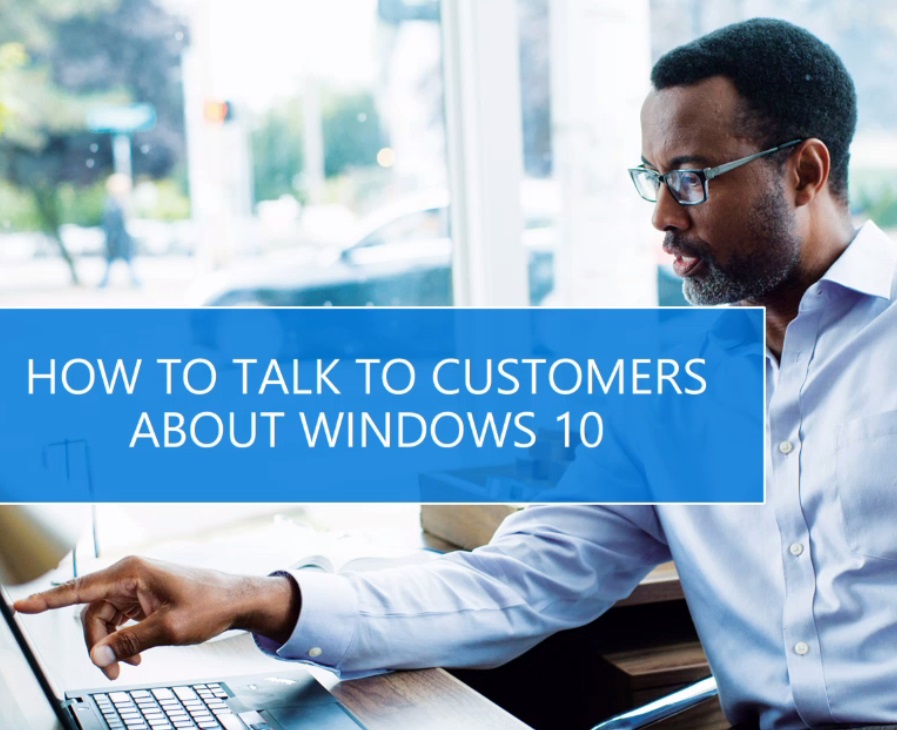Microsoft gives partners their Windows 10 marching orders

"If you haven't gotten it yet: Security, security, security. Focus on security first."

That was the missive from Microsoft execs to the company's reseller partners in one of several sessions on selling Windows 10 at the company's Worldwide Partner Conference last month.
In a session called "Content and Cash: Microsoft investments in helping partners sell and deploy Windows 10," Microsoft's emphasis on getting Windows 10 into enterprises was clear. And the way to enterprises hearts is first and foremost through improved security, Microsoft officials said.
During the Partner Conference session, presenters cited a June Total Economic Impact study of Windows 10 by Forrester that found Windows 10 is being deployed in businesses within two years, rather than the four-year span it previously took businesses to roll out a new version of Windows.
Microsoft's two-minute elevator pitch to partners about how to sell Windows 10 goes like this: 1. It's easier and faster to deploy than you'd expect; 2. It's safer against modern threats; 3. Customers love the interface, mobility, and especially when it's used on modern devices; and 4. It's easier to manage.
To spur partners to sell Windows 10, Microsoft officials told them to look at Windows 10 as the foundation for future services revenues. Building proof of concepts and helping users with pilots can yield 20 to 30 percent margins, Microsoft execs said. Selling devices as part of a monthly, managed service bundle can yield 20 to 30 percent margins, too, they claimed. Attaching Office 365, Enterprise Mobility + Security (EMS), Azure, and other Microsoft services can bring margins up to 30 to 40 percent for partners, Microsoft execs said.
"Windows 10 is a great opportunity to upsell customers to cloud services," said the presenters.
The Windows Defender Advanced Threat Protection service, which detects and responds to advanced attacks, could prove especially lucrative, they said, noting that partners could charge $40 per user per-device per year or $50 per-user per year for access to Advanced Threat Protection.
As far as I know, Microsoft officials have not disclosed Defender Advanced Threat Protection pricing beyond what was said in this session. Company officials have noted that they will offer this service to Enterprise users only, and one way to get it will be via the coming Windows 10 Enterprise E5 bundle, for which Microsoft also has not disclosed official pricing. (Windows 10 Enterprise E3, which doesn't include Defender Advanced Threat Protection, costs $84 per user per year.)
On the device side of the house, Microsoft officials advised partners to play up to customers the fact that older PCs don't include features that light up on Windows 10, like Windows Hello and Trusted Boot. They said partners should lead with premium Windows 10 PCs like the HP EliteBook, HP Elite X2, Dell Latitude 13, Dell Latitude 12 two-in one, Lenovo X1 Yoga, and the Lenovo X1 tablet.
As we've heard from Microsoft officials before, the second half of this year, Microsoft is giving more play to OEM devices running Windows 10. (This isn't too surprising, given Microsoft is unlikely to introduce any brand-new Surface form factors until next year.)
Microsoft's last piece of advice to partners looking to sell Windows 10: don't call on a customer running Windows 7 on your own PC while extolling the virtues of Windows 10.